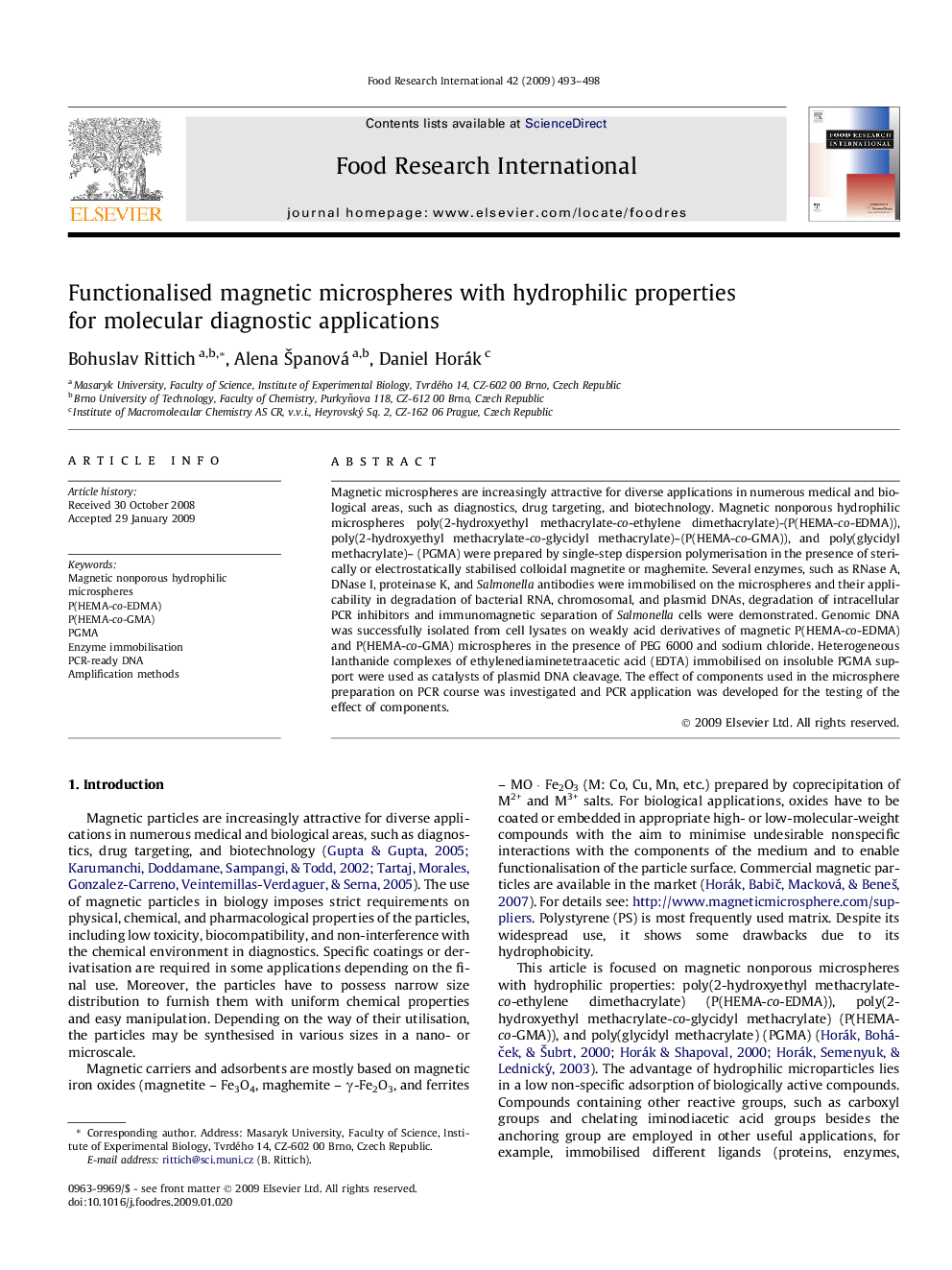| Article ID | Journal | Published Year | Pages | File Type |
|---|---|---|---|---|
| 4562865 | Food Research International | 2009 | 6 Pages |
Abstract
Magnetic microspheres are increasingly attractive for diverse applications in numerous medical and biological areas, such as diagnostics, drug targeting, and biotechnology. Magnetic nonporous hydrophilic microspheres poly(2-hydroxyethyl methacrylate-co-ethylene dimethacrylate)-(P(HEMA-co-EDMA)), poly(2-hydroxyethyl methacrylate-co-glycidyl methacrylate)-(P(HEMA-co-GMA)), and poly(glycidyl methacrylate)- (PGMA) were prepared by single-step dispersion polymerisation in the presence of sterically or electrostatically stabilised colloidal magnetite or maghemite. Several enzymes, such as RNase A, DNase I, proteinase K, and Salmonella antibodies were immobilised on the microspheres and their applicability in degradation of bacterial RNA, chromosomal, and plasmid DNAs, degradation of intracellular PCR inhibitors and immunomagnetic separation of Salmonella cells were demonstrated. Genomic DNA was successfully isolated from cell lysates on weakly acid derivatives of magnetic P(HEMA-co-EDMA) and P(HEMA-co-GMA) microspheres in the presence of PEG 6000 and sodium chloride. Heterogeneous lanthanide complexes of ethylenediaminetetraacetic acid (EDTA) immobilised on insoluble PGMA support were used as catalysts of plasmid DNA cleavage. The effect of components used in the microsphere preparation on PCR course was investigated and PCR application was developed for the testing of the effect of components.
Keywords
Related Topics
Life Sciences
Agricultural and Biological Sciences
Food Science
Authors
Bohuslav Rittich, Alena Å panová, Daniel Horák,
